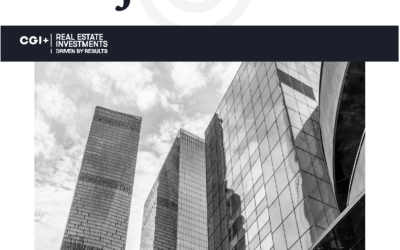When seeking out ways to build and/or diversify your portfolio and generate revenue, it is worth investigating multifamily real estate investing opportunities. Over the last 25 years, the multifamily has delivered the highest average annual total returns of any commercial real estate sector – and with low volatility. Nearly 60% of all commercial lending dollars (or about $400 billion) is directed towards multifamily projects. Is investing in this sector the right call for you?

Why Multifamily Real Estate Investing Makes Sense
According to a National Real Estate Investor survey, multifamily projects are the “most attractive” type of commercial real estate investment. Here are five compelling reasons why:
- Funding Is Readily Available. In this market, it is easier to get approved for mortgage loans for multifamily projects than for other property types. Further, you have access to a large source of capital: government sponsored Fannie Mae and Freddie Mac have provided $142 billion (or 42% of all multifamily loan capital) in recent years. Another plus: multifamily vacancies are at their lowest level since 2000. This significantly reduces the risk from a lender’s standpoint (which is advantageous to investors, of course, when it comes to terms and conditions). Rental income tends to be much more stable than, say, office or retail spaces that are built around a small number of anchor tenants. In the latter cases, replacing tenants is costly and, often, time-consuming. In short: multifamily properties offer lower risk and more reliable cash flow.
- Income Is Steady. Steady demand means that the average five year cash flow for multifamily projects is robust (8.58% on the NCREIF Property Index). At the same time, multifamily properties have, in the past five years, outperformed other commercial real estate properties and have shown less volatility historically than industrial, office, and retail counterparts. At a distinct advantage over commercial leases, which are locked into multi year agreements, multifamily rates can keep pace with inflation. As wages increase, so too do rents. Staggering expirations during peak rental periods further maximizes returns.You are able to meet changing marketing conditions with more agility; with shorter lease terms, for example, if market demands or inflation call for higher rents, you can move much faster when you’re dealing with a one year lease versus a five year lease (or more), which is standard in other commercial properties.
- Demand Is Strong. No matter what happens in the economy, people still need a home. This builds stability into the multifamily sector. Adding to this momentum, there is a shift towards apartments as residencies and away from condos and, to some extent, home ownership. Areas where we are seeing significant increases in demand:
-
- Millennials. For this demographic, renting is the most common form of housing. Several factors are involved here, from rising median home prices to the Millennial preference for mobility and flexibility over owning.
- Baby Boomers. Wanting hassle-free accommodations with amenities and proximity to services, more baby boomers are downsizing from houses and opting for apartments. With this segment of the population, higher-end spaces are especially sought after.
- Workforce. Many local authorities and communities incentivize multifamily developments that offer “workforce” housing (i.e. housing in line with the needs of police officers, fire fighters, teachers, and other median income folks) who want to live closer to their workplaces.
- Affordable Housing. There is always a need for affordable housing. Again, many communities offer incentives for the development of units that are priced for lower income renters.
- Apartments. As mentioned, apartments are also “stealing” much of the segment that was inclined to purchase condominiums to meet their lifestyle needs. Given the increased quality of apartment developments and the focus on green spaces, sustainability, entertainment, technology, and a mixed-use atmosphere, renting an apartment is more attractive to many who would have put down for a condo a few years ago.
- Capital Improvements Pay You Back. Capital improvements and property enhancements provide a great ROI as they allow you to command higher rental rates. If the improvements add value or deliver benefits, renters are typically willing to pay more. Integrated smart home technology, appliance upgrades, onsite amenities, such as gyms, can boost your investment’s power.
- Refinancing: A Sound Multifamily Investment Strategy. When you sell a building, you incur capital gains. However, you can refinance, borrow against the higher value, and collect tax-free distributions.
Multifamily properties have seen tremendous growth over the past decade, and the trend is continuing upward. If these five reasons resonate with you, and align with your goals as an investor, contact CGI Strategies. We provide personalized, high quality service and equally high performing assets that drive your portfolio forward.
Multifamily real estate investing can help you realize your objectives, build and/or diversify your portfolio, and create a reliable stream of revenue. Get in touch to learn more and to start exploring opportunities.

